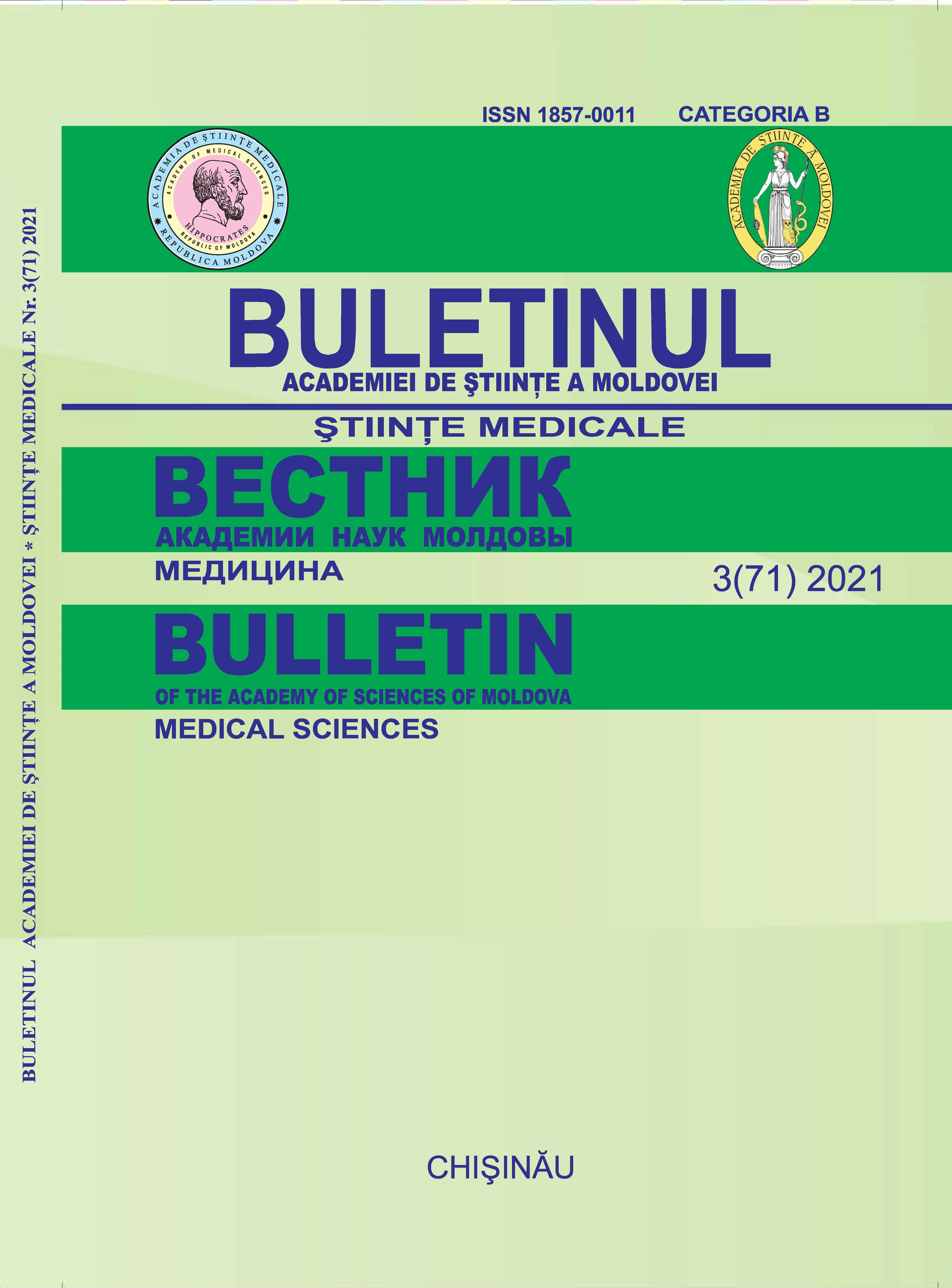THE LINK BETWEEN CIRCADIAN CLOCK AND TUMORIGENESIS
DOI:
https://doi.org/10.52692/1857-0011.2021.3-71.23Keywords:
circadian clock, circadian disruption, artificial light, cancer - clock genes, breast cancer, chronotherapyAbstract
The circadian clock is fundamental for allowing the human body to work properly. Studies demonstrated that circadian
disruption is a risk factor for a lot of pathological states and in this Review, the idea is to focus on tumorigenesis. Cancer
is a social plague and it is interesting to note how the human lifestyle can be one of the most important reasons to explain the enormous spread of tumours. The crucial point described is the connection between light, melatonin and cancer genes; this triad has an important role in tumorigenesis. After that, there is a focus on breast cancer that is the most frequent in the world, and it is also demonstrated how social level and education can influence the possibility to develop cancer during life. In the end, there is a description of one of the possible new frontiers in the treatment of cancer: chronotherapy.
References
Ayesha A. Shafi et al. Cancer and the Circadian Clock. Cancer Res., (2019), 79:3806-3814.
Christos Savvidis et al. Circadian Rhythm Disruption in Cancer Biology. MOL MED, (2012) 18:1249-1260.
Anton Shostak et al. Circadian Clock, Cell Division, and Cancer: From Molecules to Organism., (2017) Int. J. Mol. Sci. 18, 873.
Matúš Soták et al. Cross-talk between the circadian clock and the cell cycle in cancer. Annals of Medicine, (2014); 46: 221–232.
Elisabeth Filipski et al. Circadian Disruption in Experimental Cancer Processes. Integrative Cancer Therapies, (2009), 8(4) 298–302.
Hiroto Izumi et al. Circadian disruption and cancer risk: A new concept of stromal niche. International Journal Of Oncology, (2014) 44: 364-370.
Richard G. Stevens et al. Meeting Report: The Role of Environmental Lighting and Circadian Disruption in Cancer and Other Diseases. Environ Health Perspect, (2007) 115:1357–1362.
Hyuna Sung et al. Global Cancer Statistics 2020: GLOBOCAN Estimates EF incidence and Mortality Worldwide for 36 Cancers in 185 Countries. CA CANCER J CLIN; 7, (2021)1:209–249.
Eva Hadadi et al. Chronic circadian disruption modulates breast cancer stemness and immune microenvironment to drive metastasis in mice. Nature communication., (2020), 11:3193.
Sarah Gehlert et al. Shift work and breast cancer. Int. J. Environ. Res. Public Health, (2020), 17, 9544.
Richard G.Stevens et al. Circadian disruption and breast cancer from Melatonin to Clock genes. Epidemiology; (2020), 16: 254-258.
Meyomo G. Wendeu-Foyet et al. Circadian Disruption and Prostate Cancer Risk: An Updated Review of Epidemiological Evidences. Cancer Epidemiol Biomarkers Prev; (2017), 26(7)
Aziz Sancar et al. Clocks, cancer, and chronochemotherapy. Science (2021), 371, 42 14. Zhiqiang Ma et al. Melatonin as a potential anticarcinogen for non-small-cell lung cancer. Oncotarget. (2016), 7(29): 46768–46784
Anita K. Simonds et al. ERS handbook. Respiratory Sleep medicine. European Respiratory Society, (2012)
Richard G. Stevens et al. Does Electric Light Stimulate Cancer Development in Children? Cancer Epidemiol Biomarkers Prev; , (2012), 21(5)
Lupușor Adrian, Spînu Doina, Odobescu Stela, Victor Vovc, Moldovanu Ion. Ritm circadian, melatonină, somn, durere, cefalee – relații și importanța clinică. Sinteză. Buletinul AȘM. (2020), 3(67): 57-65.
Downloads
Published
Issue
Section
License
Copyright (c) 2022 Bulletin of the Academy of Sciences of Moldova. Medical Sciences

This work is licensed under a Creative Commons Attribution 4.0 International License.



